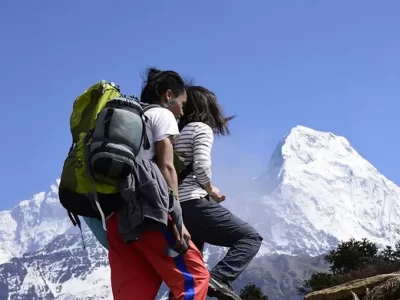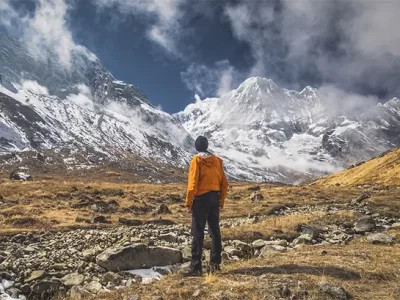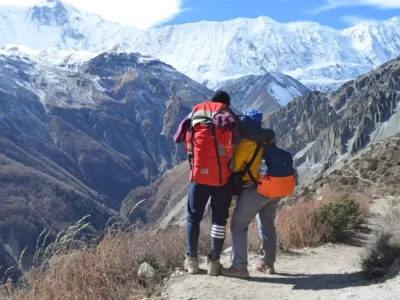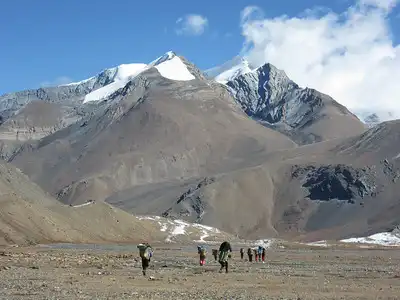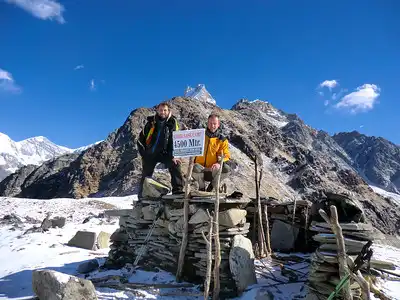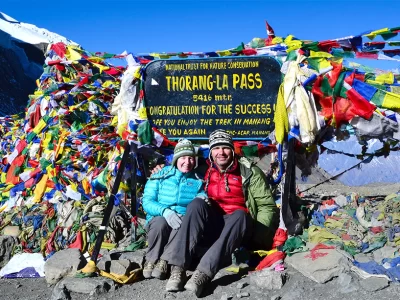The Ghorepani Poon Hill Trek ranks are among Nepal’s most popular trekking routes, offering stunning views and a rewarding experience for both beginners and experienced trekkers. This trek, known for its scenic beauty and relatively easy terrain, attracts a wide range of trekkers. As you trek through lush forests, charming villages, and terraced fields, you’ll discover that the Ghorepani Poon Hill Trek beautifully combines natural beauty with cultural richness.
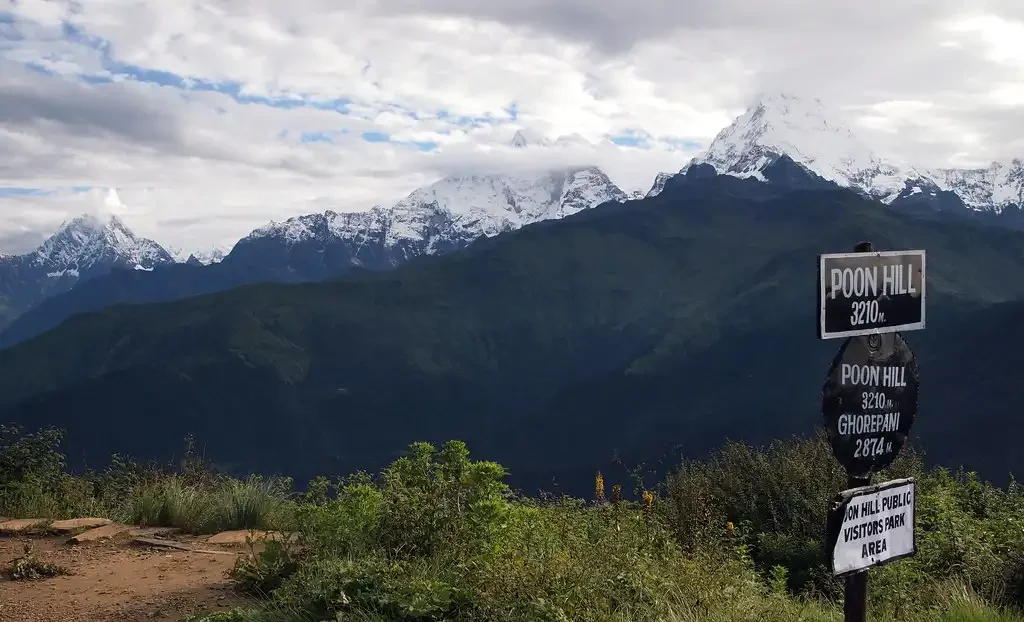
Poon Hill stands out as the highlight of this trek, providing breathtaking panoramic views of the Himalayas at sunrise. Situated in the Annapurna region, Poon Hill rises to an altitude of 3,210 meters, showcasing vistas of peaks like Dhaulagiri, Annapurna South, Machhapuchhre, and more.
The trek route starts from Nayapul, passes through scenic spots like Tikhedhunga, and reaches Ghorepani, a picturesque village nestled in the mountains. This well-marked path, known as the Poon Hill trekking route, sees trekkers year-round. Ghorepani itself is a charming village in Nepal, serving as a crucial rest stop before you ascend to Poon Hill.
The Ghorepani trek features hospitable teahouses and lodges, allowing trekkers to experience the local culture and cuisine. As you follow the poon hill trek route, you’ll encounter diverse flora and fauna, enriching your trek as much as the destination. Whether you admire the poon hill view at dawn or trek through the rhododendron forests, the Ghorepani Poon Hill trekking experience promises unforgettable memories and spectacular natural scenery.
Ghorepani Poon Hill Trek
Annapurna Base Camp Trek
Annapurna Circuit Trek
Ghorepani Poon Hill Trek Attractions
1. Mesmerizing Sunrise at Poon Hill
One of the unforgettable moments of the Ghorepani Poon Mountain Trek is the morning trek to Poon Mountain to watch the sunrise. As the sun begins to rise over the stunning Annapurna mountain range, the sky bursts into bright shades of orange and pink, casting a golden glow across the snow-capped peaks.
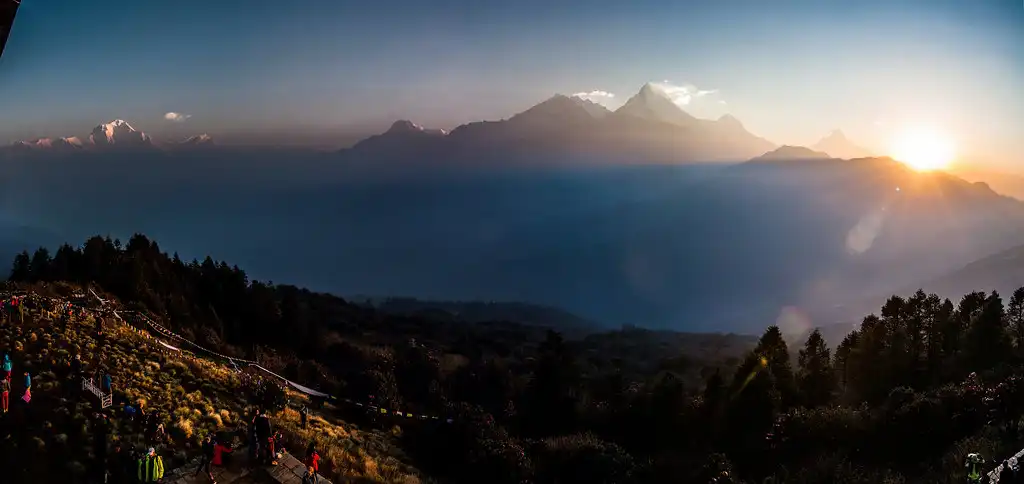
This magical sunrise at Poon offers unparalleled photo opportunities, leaving you in awe of nature’s beauty. Many travelers consider this sunrise to be the highlight of their trip.
2. Panoramic Mountain Views
Trekkers on the Ghorepani Poon Hill Trek continuously enjoy breathtaking vistas of some of the Himalayas’ most famous peaks. From various points along the trail, you can see Annapurna South, Annapurna I, Annapurna II, III, IV, Dhaulagiri, Mardi Himal, Lamjung Himal, Gangapurna, Hiunchuli, and Machhapuchhre.
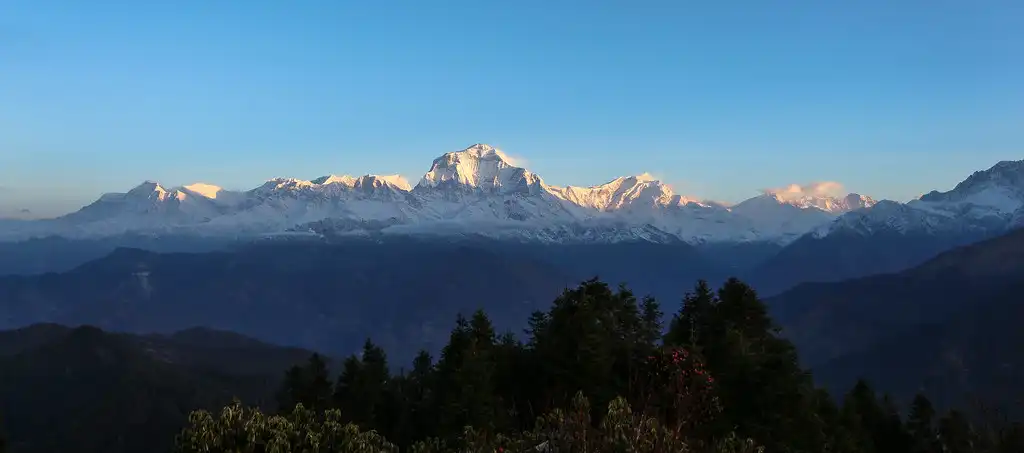
Each viewpoint offers a new perspective, enhancing your appreciation of the Himalayan majesty. These stunning vistas make the trek a visual feast, with the mountains standing tall against the sky, providing breathtaking views at every turn.
3. Vibrant Rhododendron Forests
In spring, the Ghorepani Poon Hill Trek becomes especially beautiful as the forests along the trail explode with the bright reds, pinks, and whites of blooming rhododendrons. These dense forests provide a stark and beautiful contrast against the distant snow-covered mountains.
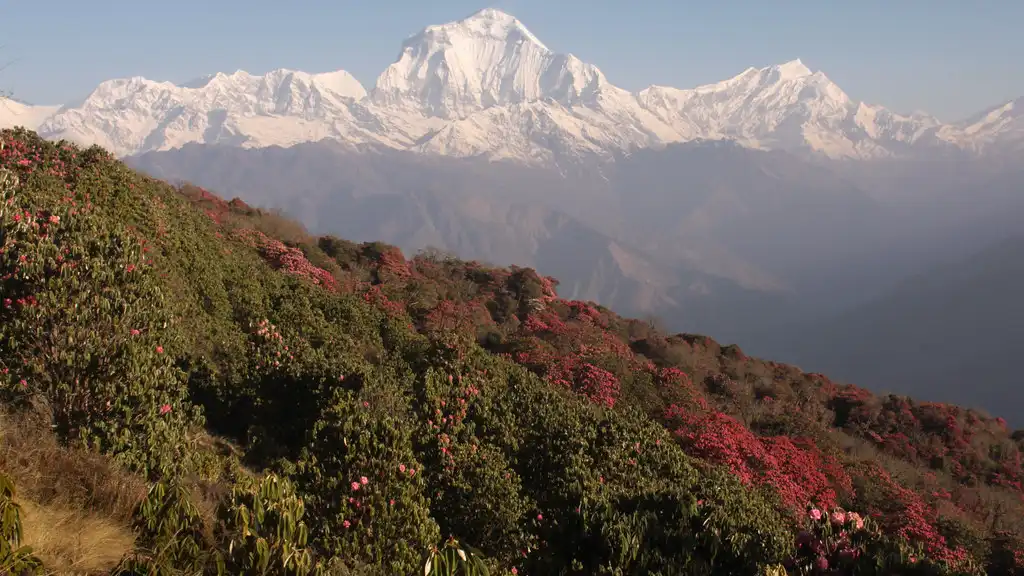
The lush vegetation enhances the overall beauty of the landscape, making the trek even more enchanting and memorable. The vibrant hues create a picturesque setting that feels almost magical.
4. Cultural Immersion in Ghorepani
Ghorepani offers more than just a resting point; it provides a rich immersion into the heritage of the Gurung and Magar communities. Trekkers can explore local lifestyles, traditions, and hospitality that add cultural depth to their hiking experience.
As you travel, you’ll encounter traditional villages where you can interact with warm and welcoming locals. Learning about their way of life, traditions, and customs offers a deeper understanding of the region’s heritage.
5. Historic Ghandruk Village
Ghandruk Village provides a window into traditional Himalayan life as a well-preserved Gurung village. Visitors can stroll through the village, see the stone houses, visit the Gurung museum, and interact with locals.
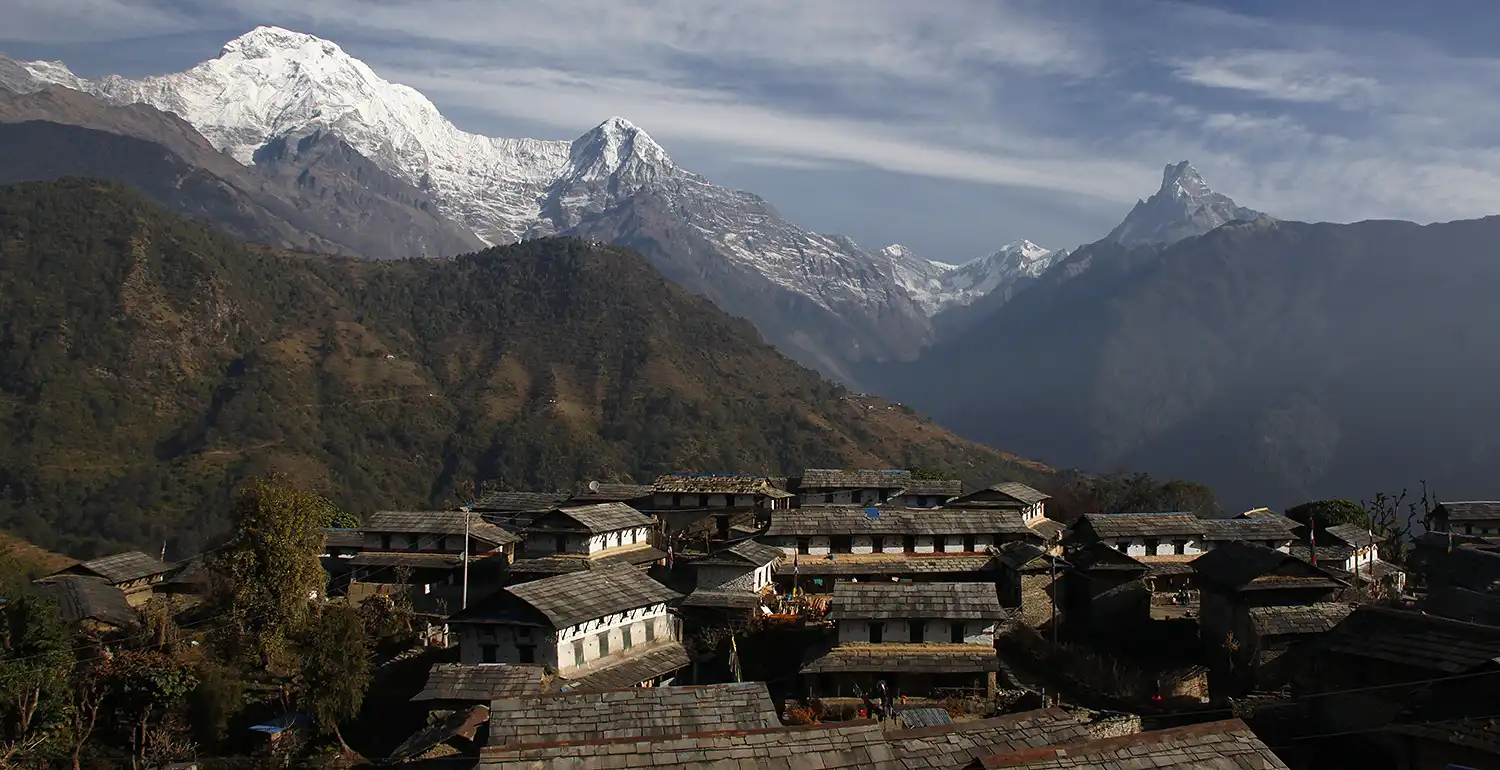
The setting of Ghandruk Village offers scenic views of the surrounding mountains, making it a culturally and visually enriching stop on the trek. These charming settlements exude tranquility and authenticity, with their rustic houses and prayer flags fluttering in the wind.
6. Stone Staircase at Ulleri
A challenging yet memorable part of the trek involves the ascent of the famous stone staircase at Ulleri, which consists of over 3,300 steps. This arduous climb tests the stamina of trekkers but also marks a rite of passage leading to the beautiful landscapes of the higher regions.
7. Bird’s Eye View from Tadapani
Tadapani offers another exceptional viewpoint, providing clear and close-up views of the Annapurna range. This spot is ideal for those looking to capture the grandeur of the mountains in a serene setting, away from the larger crowds found at more popular viewpoints.
8. Rhythmic Sounds of Bhurungdi Khola River
The gentle sounds of the Bhurungdi Khola River accompany trekkers along parts of the trail, adding a soothing soundtrack to the trek. The river’s presence enhances the tranquil atmosphere of the trek, making it more enjoyable and meditative.
9. Local Hospitality and Tea Houses
Local families run the welcoming teahouses along the trails. These places offer essential rest and refreshments, giving you the opportunity to interact with the Nepalese people and experience the hospitality they are famous for.
These tea houses serve delicious traditional Nepali food, offering the opportunity to sample and enjoy authentic delicacies and the chance to refuel and network with colleagues while experiencing the warm hospitality provided by the locals.
10. Annapurna Conservation Area
The trek gives you the opportunity to explore the Annapurna Sanctuary, a protected area of diverse flora and fauna, where you will trek through lush forests, waterfalls, and meandering rivers on trails that capture the serene beauty of nature.
The area provides a unique opportunity to observe wildlife and appreciate the pristine environment. Encountering the diversity of life will give you a deeper appreciation of the natural world.
11. Beautiful Landscapes
The adventure rewards you with amazing sights at every turn. From mountain views to terraced farms and rolling hills, the natural beauty of the area is simply stunning.
The ever-changing landscape creates a sense of wonder and tranquility, captivating you with the sheer splendor of your surroundings. Each step offers a new and beautiful view, making the walk truly unforgettable.
12. Hot Springs at Jhinu Danda
Following a long day of trekking, trekkers can relax here by soaking their weary muscles in the natural hot springs at Jhinu Danda.
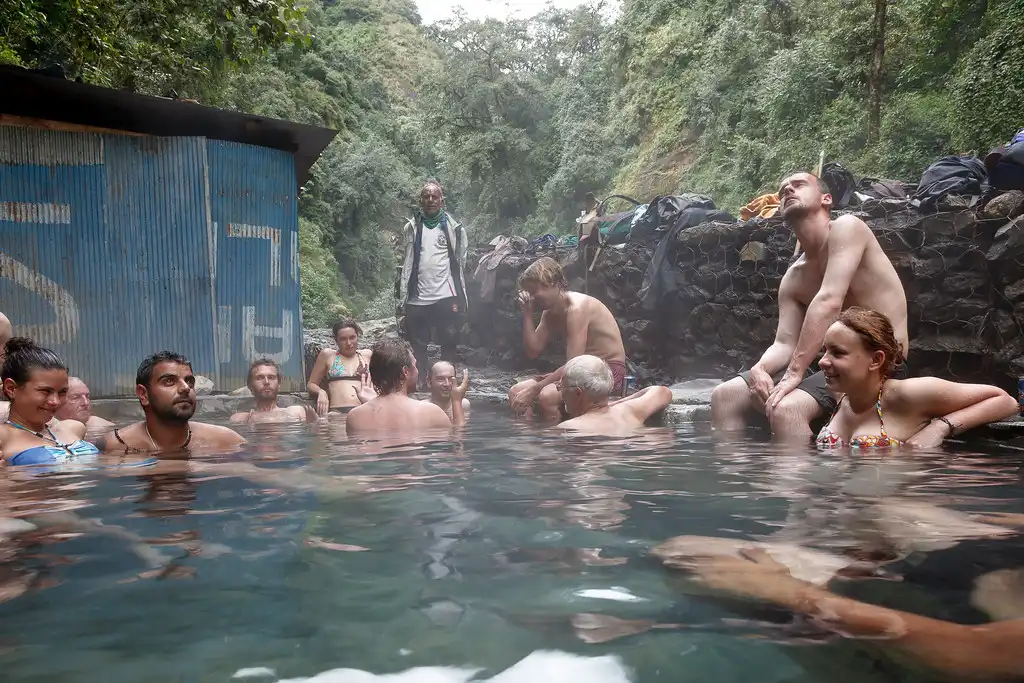
These peaceful natural hot springs, nestled amongst lush greenery, will provide relief for all who want to unwind while enjoying the tranquility that abounds all around this place.
13. Pokhara City
Before and after the trek, many travelers choose to stay in Pokhara City, a beautiful lakeside city known for its relaxed atmosphere. Here, visitors can enjoy boating on Phewa Lake, explore vibrant streets, and visit landmarks like the Peace Pagoda.
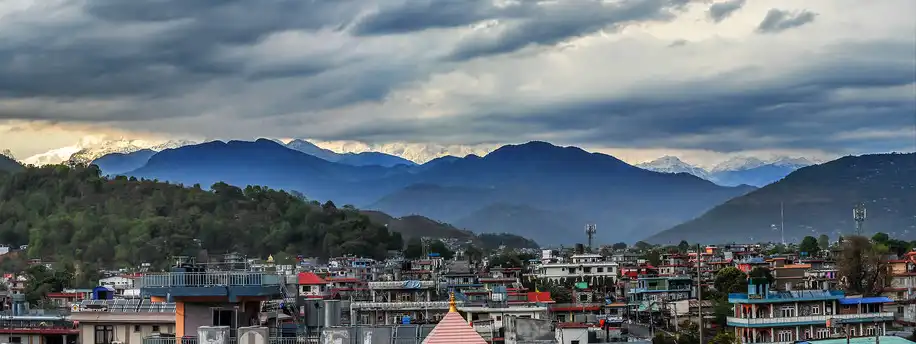
A Pokhara visit rounds out the trekking adventure with some leisure time in one of Nepal’s most charming cities. The serene environment of Pokhara town provides a perfect place to relax and reflect on the trekking experience.
Dhaulagiri Trek
Mardi Himal Trek
Mini Annapurna Circuit Trek
Best Time to Trek
Spring (March to May)
Spring offers an ideal time for the Ghorepani Poon Hill Trek, thanks to the vibrant rhododendrons blooming along the trails. As you trek through the region, you’ll encounter a stunning array of colors from these flowers, creating a beautiful and picturesque trek. This season turns the landscape into a photographer’s dream, with numerous opportunities to capture the area’s natural beauty.
The mild weather during spring makes the trek comfortable both during the day and at night. Daytime temperatures range from 10°C to 20°C, providing pleasant hiking conditions without extreme heat or cold.
Evenings are slightly cooler but still comfortable, ensuring a good night’s rest after a day of trekking. The relatively clear skies in spring also offer excellent visibility of the majestic mountain peaks, providing breathtaking views and enhancing the overall trekking experience.
However, spring is a peak trekking season, which means the trails and tea houses can get crowded. High demand during this period can lead to increased prices for accommodations and services, so booking in advance is advisable.
Autumn (September to November)
Autumn offers a prime season for the Ghorepani Poon Hill Trek due to its stable and dry weather. Trekkers enjoy ideal conditions, with clear skies and moderate temperatures, making each day of hiking pleasant. The post-monsoon clarity provides you with exceptional views of the Himalayan range, allowing trekkers to appreciate the stunning mountain scenery fully.
Trekkers in autumn also get the photographers to immerse themselves in local culture by experiencing festivals like Dashain and Tihar. These celebrations add a rich cultural dimension to the trek, offering unique insights into the traditions and customs of the local communities.
The vibrant festivities enhance the trekking experience, making it more memorable and engaging. The popular autumn means that the trails and tea houses can become quite crowded. The high demand during this peak season leads to busy paths and increased prices for accommodations and services.
While daytime temperatures range from 10°C to 20°C and are generally pleasant, nights can be quite cold, especially at higher altitudes where temperatures can drop to around 0°C. Despite these challenges, the combination of stable weather, cultural experiences, and clear skies makes autumn an excellent time for the Ghorepani Poon Hill Trek.
Winter (December to February)
Winter provides a serene experience for the Ghorepani Poon Hill Trek, with fewer trekkers on the trails. You can enjoy solitude and a quieter environment, allowing for a deep connection with nature.
The cold, clear weather during winter also offers some of the most stunning, crisp views of the mountains, making it an excellent time for photography and peaceful reflection.
Trekking in winter presents challenges. The weather can be extremely cold, with daytime temperatures ranging from 5°C to 10°C and dropping significantly at night, often well below freezing. Snow and ice at higher elevations can make the trails more difficult and require additional gear. Despite these hurdles, the beauty and tranquility of winter create a unique and rewarding trekking experience.
Monsoon (June to August)
The monsoon season transforms the Ghorepani Poon Hill Trek into a lush and vibrant landscape, with abundant rainfall enhancing the greenery. This time of year provides a peaceful and serene environment as the trails become quieter with fewer trekkers.
You can enjoy a more tranquil experience and deeply connect with the surrounding natural beauty. Trekking during the monsoon presents certain challenges. Heavy rains can make the trails slippery and muddy, increasing the difficulty of the trek.
Damp conditions also attract leeches, especially in lower altitude areas. Frequent clouds and rain can obscure mountain views, limiting visibility. Despite these challenges, the exceptionally green and vibrant landscape during the monsoon offers a unique and rewarding trekking experience.
Poon Hill Trek Route
The Poon Hill Trek route stands out as one of the most accessible and rewarding treks in the Annapurna region, celebrated for its stunning mountain vistas and rich cultural experiences. You begin the trek from Nayapul, a short drive from Pokhara, and ascend through lush subtropical forests and traditional Gurung and Magar villages.
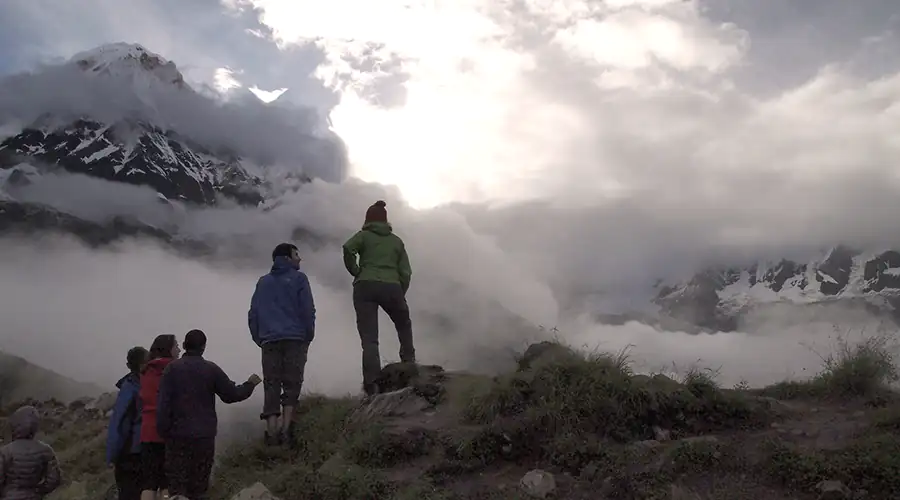
As you progress through Tikhedhunga and Ulleri, you will encounter the famous steep stone staircases leading up to the Magar village of Ulleri, which offer stunning panoramic views as you climb higher. Continuing from Ulleri, the Poon Hill Trek route gently ascends through rhododendron and oak forests, eventually leading to Ghorepani.
In Ghorepani, trekkers rest before starting the early morning trek to Poon Hill, the trek’s highlight. This vantage point provides spectacular sunrise views over the Annapurna and Dhaulagiri mountain ranges. After enjoying the sunrise, you typically descend through the beautiful forests to Tadapani and then to Ghandruk. This section of the trek offers a mix of dense forests and breathtaking mountain scenery before completing the loop back to Nayapul.
Itinerary for Poon Hill Trek
Day 01: Arrival in Kathmandu
Your adventure starts as you arrive in Kathmandu. A representative from Peregrine Treks will welcome you at the airport and escort you to your hotel.
Day 02: Explore Kathmandu
Spend the day exploring Kathmandu and taking in its unique atmosphere and rich local culture. Visit historic sites, wander through vibrant markets, and enjoy the city’s diverse culinary offerings.
Day 03: Kathmandu to Pokhara to Tikhedhunga
Begin the Poon Hill trek with a flight from Kathmandu to Pokhara. From there, a short drive will take you to Nayapul, the starting point where you will trek. Walk through charming villages and beautiful landscapes, reaching Tikhedhunga by day’s end.
Day 04: Tikhedhunga to Ghorepani
Prepare for a challenging climb to Ghorepani, starting with the steep stone staircases at Ulleri. Pass through lush rhododendron forests and enjoy scenic views along the way, stopping at Nangethanti for lunch before continuing to Gtrek’sni.
Day 05: Ghorepani to Poon Hill to Tadapani
Rise early for a pre-dawn trek to Poon Hill, the highlight of the trek, offering breathtaking sunrise views over the Himalayas. After returning to Ghorepani for breakfast, continue trekking towards Tadapani, experiencing diverse landscapes and microclimates.
Day 06: Tadapani to Nayapul, drive to Pokhara
Descend steeply from Tadapani to Nayapul, passing through stunning hillside landscapes and forests. Once you reach Nayapul, a drive will take you back to your hotel in Pokhara for some well-deserved rest.
Day 07: Fly from Pokhara to Kathmandu
Enjoy a leisurely morning in Pokhara, possibly exploring more of this charming town. Then, catch a flight back to Kathmandu, where you can spend the evening relaxing or discovering more of the city.
Day 08: Depart Kathmandu
On your final day, savor your last moments in Kathmandu with breakfast at a local café or some last-minute souvenir shopping. A representative will drive you to the airport for your departure, ensuring you arrive at least two hours before your flight.
Difficulty Level of the Poon Hill Trek
The Poon Hill Trek falls into the moderate category, making it accessible for both beginners and experienced trekkers. While it doesn’t require advanced trekking skills or technical climbing, it does present some physical challenges and diverse terrain. Factors Contributing to Difficulty are listed below:
Altitude
The Poon Hill trek, which is the highest elevation of the trek, is at an approximate height of 3,210 meters above sea level or 10,629 feet. Although this height is not very high compared with other Himalayan mountains, it might still cause some light discomfort due to a difference in itineraries along these ranges. In order to avoid acute mountain sickness, mountain hikers should climb slowly, drink enough water, and rest well.
Trail Conditions
The trail features steep sections, particularly the ascent to Ulleri, which involves climbing over 3,700 stone steps. This part of the trek can be physically demanding, especially for those unaccustomed to long ascents. Additionally, the trail can be rocky and uneven in places, requiring good balance and sturdy footwear.
Daily Trekking Hours
Trekkers typically trek for about 5 to 7 hours a day, which requires endurance and good fitness. The trek requires daily climbs and descents, can be physically taxing, and involves running everywhere.
Weather Conditions
The weather varies by season. Spring and autumn usually offer mild weather, clear skies, and pleasant temperatures. However, winter can bring significantly lower temperatures, especially at night, making the trek more challenging.
Mixed Terrain
The trek includes diverse landscapes, such as lush forests, terraced fields, and rocky paths. This varying terrain requires good balance and stable footing. Some sections pass through rhododendron forests and steep, narrow paths, which can be particularly challenging after rain.
Preparation Tips
Physical Fitness
Regular cardiovascular exercises like walking, jogging, or cycling can build the stamina needed for the trek. Strength training, especially for the legs, is also beneficial. Starting training several weeks before the trek helps build endurance and muscle strength.
Proper Gear
Good-quality trekking boots with ankle support are essential for navigating rocky and uneven terrain. Warm clothing, including thermal layers, a down jacket, and a hat, is crucial for higher altitudes. Rain gear, such as a waterproof jacket and pants, is necessary for the monsoon season. Trekking poles can help with stability on steep and uneven sections.
Acclimatization
While the altitude is not extremely high, it’s important to allow your body time to acclimatize. Ascend gradually and avoid rushing. Staying well-hydrated and taking regular breaks can help prevent altitude sickness. Spending an extra day at higher altitudes can also help your body adjust.
Mental Preparation
Prepare for long walking days and varying weather conditions. A positive mindset and mental resilience can greatly enhance your trekking experience. Being mentally prepared for challenges like steep climbs and potentially adverse weather helps maintain motivation and enjoyment throughout the trek.
Accommodation and Food
Teahouses, the primary accommodation along the Poon Hill Trek route, are run by local families. These teahouses offer basic but comfortable sleeping quarters, typically with twin beds, pillows, sheets, and blankets. As you trek to higher or more remote locations, accommodations become more basic. Most teahouses provide shared bathroom facilities, with a mix of Western-style and squat toilets. Hot showers are available in many teahouses, though they may require an additional fee.
Teahouses also serve as dining establishments, offering a diverse menu. The staple meal is ‘dal bhat,’ a traditional Nepali dish made up of rice, lentil soup, and vegetable or meat curries. You can also find a variety of other food options, such as pancakes, pasta, eggs, and sandwiches. For beverages, tea houses provide filtered and boiled water for purchase, along with tea, coffee, soft drinks, and sometimes local alcoholic beverages. Trekkers are encouraged to refill their bottles with purified water to reduce plastic waste.
Permits and Regulations
Required Permits for the Ghorepani Poon Hill Trek
The Poon Hill Trek requires specific permits to ensure the safety of trekkers, maintain the region’s environment, and support local community development. The two essential permits are the TIMS (Trekkers’ Information Management System) Card and the Annapurna Conservation Area Permit (ACAP).
TIMS (Trekkers’ Information Management System) Card
The TIMS card keeps a record of trekkers in the region and ensures their safety. To obtain a TIMS card, you need two passport-sized photos, a copy of your passport, itinerary details, and contact information for your emergency contact and insurance details. You can get the TIMS card from the Nepal Tourism Board Office in Kathmandu.
Annapurna Conservation Area Permit (ACAP)
The ACAP supports the protection and maintenance of the Annapurna region. The fees collected contribute to sustainable community development and environmental conservation. To get the ACAP, you need two passport-sized photos and a copy of your passport. You can obtain this permit from the Nepal Tourism Board Office in Kathmandu or the ACAP counter during the TIMS card acquisition in Pokhara.
Regulations
You can always carry the original and copies of your permits during the trek, as checkpoints along the route will require you to show them. Please make sure you have all necessary documentation ready when you obtain your permits, and verify the latest requirements and costs before planning your trek, as these can change.
By securing these permits, you support the region’s sustainability and development of the Annapurna region, ensuring it remains a beautiful destination for future trekkers.
Packing List
Clothing
- Moisture-wicking base layers
- Insulating layers (fleece or down jacket)
- Waterproof and windproof outer jacket
- Lightweight trekking pants
- Waterproof pants
- Warm hat and gloves
- Sun hat or cap
- Buff or neck gaiter
- Thermal underwear
- Quick-drying socks
- Comfortable trekking boots
- Camp shoes or sandals
Gear and Accessories
- Backpack (30-40 liters)
- Sleeping bag (rated for cold temperatures)
- Trekking poles
- Headlamp with extra batteries
- Water bottles or hydration system
- Water purification tablets or filter
- Sunglasses with UV protection
- Sunscreen and lip balm with SPF
- First aid kit
- Multi-tool or knife
- Lightweight towel
- Rain cover for backpack
- Small daypack (optional)
Personal Items
- Toiletries (toothbrush, toothpaste, biodegradable soap, etc.)
- Travel-sized hand sanitizer
- Wet wipes or tissue paper
- Personal medications
- Snacks and energy bars
- Camera or smartphone for photos
- Power bank and charging cables
- Earplugs and eye mask (optional)
Documents
- Passport (with photocopies)
- TIMS Card
- Annapurna Conservation Area Permit (ACAP)
- Travel insurance details
- Emergency contact information
- Cash (Nepalese Rupees) for expenses on the trek
Photography Tips
Best Spots for Capturing Stunning Views
The Poon Hill Trek offers many breathtaking spots for photography. Poon Hill itself is the prime location, especially at sunrise, where you can capture panoramic views of the Annapurna and Dhaulagiri Mountain ranges bathed in golden light. Ghorepani village provides charming shots of local life against a stunning mountain backdrop.
The rhododendron forests, particularly in spring, burst with vibrant colors that make for captivating photographs. Tadapani and Ghandruk are also excellent spots, offering beautiful views of the mountains and terraced fields. Along the trail, keep your camera ready for spontaneous shots of waterfalls, rivers, and local wildlife.
What to Expect on the Trail
The Poon Hill Trek features varied trail conditions, including steep stone staircases and paths winding through lush forests and terraced fields. You will walk on well-trodden paths that are rocky and uneven, particularly during the ascent to Ulleri. In the monsoon season, trails can become slippery and muddy, making proper footwear essential.
The trek includes a mix of challenging ascents and gentle descents, suitable for trekkers with moderate fitness levels. Rhododendron groves burst into vibrant spring colors. Wildlife sightings include monkeys, giraffes, and a variety of birds. The highlight of the trek is the panoramic view of the Annapurna and Dhaulagiri ranges from Mount Poon. The sunrise is especially spectacular for viewers as it bathes the mountaintops in golden light.
Poon Hill Height
Poon Hill rises to an impressive height of 3,210 meters (10,531 feet), offering a prime location for panoramic views of the Himalayas. This elevation gives trekkers a unique vantage point to witness the sunrise over majestic peaks like Annapurna and Dhaulagiri. The poon hill height provides an accessible yet exhilarating experience, allowing trekkers to enjoy high-altitude scenery without facing the challenges of extreme elevations.
The poon hill height becomes particularly significant during the early morning hours when the first light of dawn illuminates the snow-capped mountains. Trekkers often begin their trek before dawn to reach the summit in time for this breathtaking spectacle. The moderate height ensures that trekkers of various fitness levels can achieve this rewarding climb, making it a highlight of the Ghorepani Poon Hill Trek.
Conclusion
The Ghorepani Poon Hill Trek perfectly combines stunning mountain views, vibrant rhododendron forests, and rich cultural experiences. With varied trail conditions, this trek suits those with moderate fitness levels and promises an unforgettable adventure. By securing essential permits, packing proper gear, and preparing mindfully, you can ensure a smooth and enjoyable trek.
Start planning your Ghorepani Poon Hill Trek now to experience the beauty of the Annapurna region firsthand. If you found this guide helpful, please share it with others who might be interested, and feel free to ask any questions in the comments section below. Your adventure awaits!

